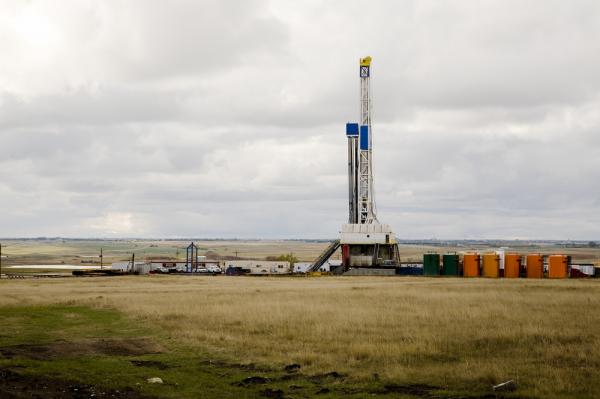
BISMARCK, N.D., Nov. 18 (UPI) — A regulator in North Dakota said low oil prices were in part behind the decline in crude oil production, last reported at its lowest level since early 2014.
The North Dakota Industrial Commission reported crude oil production in September, the last full month for which it has data, at 971,658 barrels per day, a decline of more than 10,000 bpd from the previous month and 20 percent, or roughly 256,000 bpd, less than the peak from December 2014.
“Oil price weakness is the primary reason for the slow-down and is now anticipated to last into the second quarter of 2017,” Lynn Helms, a director at the North Dakota Department of Mineral Resources, said in a statement.
The price for West Texas Intermediate, the U.S. benchmark price for crude oil, was around $54 per barrel at the end of 2014 when North Dakota crude oil production peaked. It’s now at around $46 per barrel and the weakness has forced many companies to cut back on spending for exploration and production.
Continental Resources, one of the larger players in the Bakken shale oil fields in the state, said its net production for the third quarter was about 5 percent lower than the previous quarter and 9 percent lower year-on-year. Most of the decline came from North Dakota and the company said it had curtailed production there in response to lower oil prices, but was now picking up the pace.
Helms said there were signs of recovery emerging, though exploration and production figures were fluid during the latter half of the year. The rig count increased two from August to September, declined one over the next period, but is now up since October.
“Operators are shifting from running the minimum number of rigs to incremental increases throughout 2017 as long as oil prices remain below $60 per barrel for WTI,” he said.
Nevertheless, rig counts state-wide are down more than 80 percent from their peak levels. Crude oil production, meanwhile, is at its lowest level since early 2014. Helms said rig counts would stay relatively low because of market pressures related to a weaker Chinese economy, the impact of the British exit from the European Union and the lifting of sanctions on Iran, a member of the Organization of Petroleum Exporting Countries.
North Dakota production figures come as the state wrestles with mounting protests over the construction of the Dakota Access oil pipeline. A study by the Institute for Energy Economics and Financial Analysis, which has ties to groups advocating for a low-carbon economy, said building additional pipeline capacity was counter-intuitive given lower production levels.






